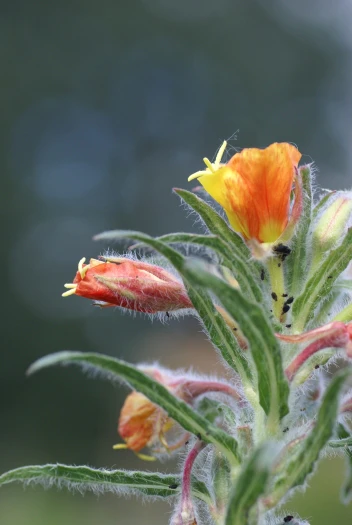Evening Primrose
(Oenothera versicolor)
Evening Primrose (Oenothera versicolor)
/
/

Rolf Engstrand
CC BY-SA 3.0
Image By:
Rolf Engstrand
Recorded By:
Copyright:
CC BY-SA 3.0
Copyright Notice:
Photo by: Rolf Engstrand | License Type: CC BY-SA 3.0 | License URL: https://creativecommons.org/licenses/by/2.0 | Uploader: Rolf Engstrand | Publisher: Wikimedia Commons |





Estimated Native Range
Climate Requirements for Centerville, Ohio
| This Plant | Your Site | Plant Suitability for Your Location | ||
|---|---|---|---|---|
| • Precipitation | 10" - 94" | 40" | Aquatic | Aquatic |
| • High Temp. | 56°F - 93°F | 85°F | Your summer temperatures are normal for this plant. | Excellent |
| • Low Temp. | 15°F - 67°F | 19°F | Your winter temperatures are normal for this plant | Excellent |
This plant may not grow well at your location - your precipitation is too high.
Summary
Oenothera versicolor, commonly known as Evening Primrose, is a deciduous perennial herb native to Western South America, including regions such as grasslands, open woodlands, and prairies. It typically grows to a height and width of approximately 1 foot. Oenothera versicolor is known for its striking bi-colored flowers that transition from yellow to orange and red, blooming profusely from late spring to early fall. The flowers are particularly showy and open in the evening, hence the common name.
Evening Primrose is valued for its vibrant flowers and ability to attract pollinators such as bees and moths. It is often used in borders, rock gardens, and as a ground cover due to its low-growing habit. This plant is drought-tolerant, making it suitable for xeriscaping and gardens with low water availability. It thrives in full sun and requires well-drained soil. While generally low-maintenance, it can self-seed prolifically, which may be considered invasive in some areas. Evening Primrose oil, extracted from the seeds, is used for its purported medicinal properties.CC BY-SA 4.0
Evening Primrose is valued for its vibrant flowers and ability to attract pollinators such as bees and moths. It is often used in borders, rock gardens, and as a ground cover due to its low-growing habit. This plant is drought-tolerant, making it suitable for xeriscaping and gardens with low water availability. It thrives in full sun and requires well-drained soil. While generally low-maintenance, it can self-seed prolifically, which may be considered invasive in some areas. Evening Primrose oil, extracted from the seeds, is used for its purported medicinal properties.CC BY-SA 4.0
Plant Description
- Plant Type: Herb
- Height: 1-2 feet
- Width: 1-1.3 feet
- Growth Rate: Moderate
- Flower Color: Yellow, Orange, Red
- Flowering Season: Spring, Summer
- Leaf Retention: Deciduous
Growth Requirements
- Sun: Full Sun
- Water: Low
- Drainage: Medium
Common Uses
Bee Garden, Bird Garden, Border Plant, Butterfly Garden, Deer Resistant, Drought Tolerant, Groundcover, Hummingbird Garden, Low Maintenance, Potted Plant, Rabbit Resistant, Salt Tolerant, Showy Flowers
Natural Habitat
Native to grasslands, open woodlands, and prairies in North America
Other Names
Common Names: Sundrops
Scientific Names: Oenothera versicolor, Oenothera coccinea, Oenothera campylocalyx, Oenothera curvifolia, Oenothera cinnabarina, Onagra fusca, Oenothera fusca
GBIF Accepted Name: Oenothera versicolor Lehm.